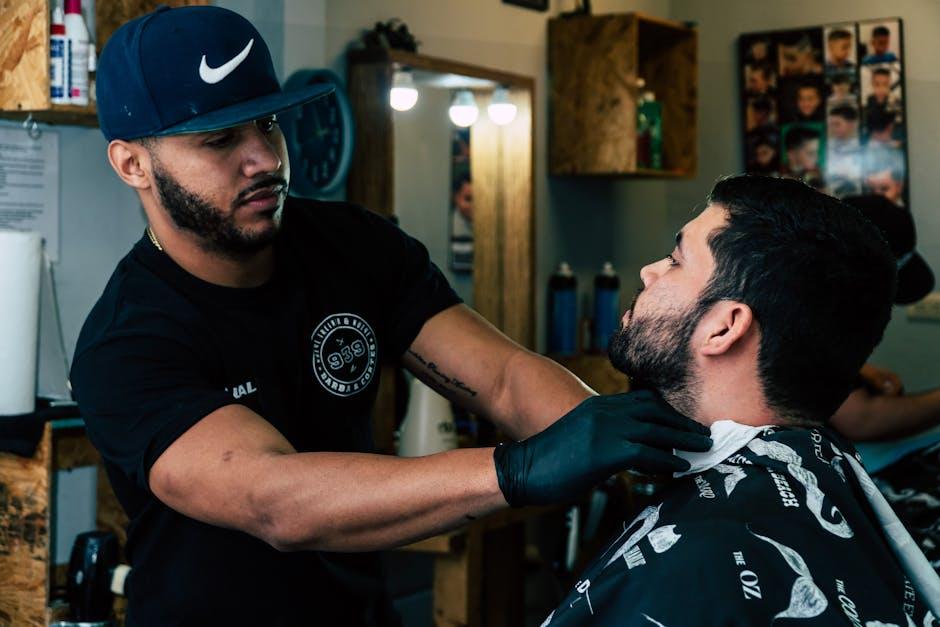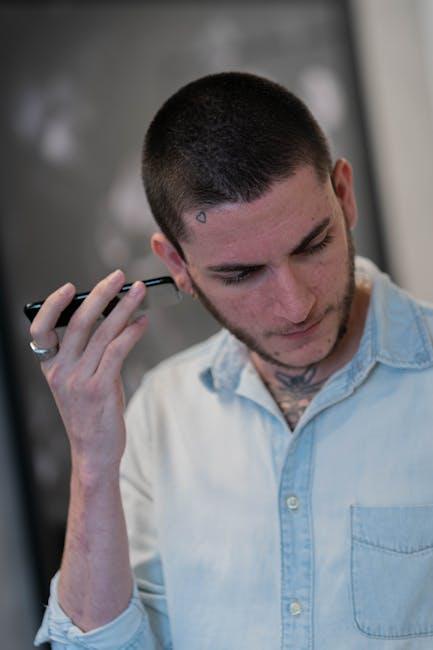Best practices for trimming hair at home safely
In a world where personal grooming often dances between necessity and art, the humble act of trimming one’s hair at home has emerged as both a practical skill and a creative endeavor. Whether driven by the desire for convenience, a quest for self-expression, or the simple pleasure of mastering a new craft, many have embraced the shears with both enthusiasm and a touch of trepidation. This article seeks to illuminate the path to home hair-trimming success, offering a collection of best practices that ensure not only a polished look but also a safe and enjoyable experience. As we delve into this guide, let us explore the techniques and tips that transform an ordinary bathroom into a personal salon, where every snip is a step toward both style and self-sufficiency.
Choosing the Right Tools for a Professional Finish
Selecting the appropriate tools is crucial for achieving a professional-grade haircut at home. When assembling your toolkit, prioritize quality and versatility. Begin with a pair of high-quality hair scissors. Look for scissors that are sharp, ergonomic, and designed specifically for cutting hair, as these will provide precision and comfort. Clippers with adjustable guards are another essential, offering the flexibility to manage different hair lengths with ease.
Consider the following when building your home hair-trimming kit:
- Comb: A fine-toothed comb helps in sectioning and managing hair during the cutting process.
- Mirror Setup: Invest in a multi-angle mirror or a tri-fold mirror to view your head from all angles.
- Sectioning Clips: These are invaluable for keeping hair organized and manageable, especially when working with longer hair.
- Spray Bottle: Keeping hair slightly damp can aid in more precise cutting and control.
Embracing the right tools not only enhances the quality of your cut but also ensures safety, minimizing the risk of accidents. A well-equipped kit is the foundation of any successful at-home haircutting endeavor.

Mastering Techniques for Different Hair Types
Achieving a salon-quality haircut at home requires a nuanced approach, especially when considering the unique characteristics of different hair types. Curly hair, for instance, can be unpredictable when dry and often shrinks significantly once cut. To master this, always trim curls while they’re dry, allowing their natural pattern to guide your scissors. Straight hair, on the other hand, is more forgiving but can show mistakes easily. Ensure precision by cutting small sections at a time and maintaining even tension throughout. For those with wavy hair, a blend of techniques is best. Consider trimming when damp to balance the unpredictability of curls with the uniformity of straight strands.
- Curly Hair: Cut dry, follow the curl pattern.
- Straight Hair: Trim small sections, maintain tension.
- Wavy Hair: Best trimmed damp, balance techniques.
For coarse hair, it’s crucial to use sharp scissors and cut in sections to avoid uneven layers. Fine hair benefits from texturizing techniques to add volume and prevent a flat appearance. Always remember, regardless of hair type, to cut less than you think necessary; you can always trim more, but you can’t put hair back. By adapting your technique to your hair’s unique needs, you can confidently achieve a fresh look without stepping foot in a salon.
Creating a Safe and Clean Hair Trimming Environment
To ensure a safe and clean experience while trimming hair at home, it’s essential to establish a well-organized environment. Begin by selecting a well-lit area with a mirror, ideally in a bathroom or a space that is easy to clean. Place a non-slip mat on the floor to catch any stray hairs and prevent accidents. Sanitizing your tools before and after each use is crucial to prevent infections; use a disinfectant spray or alcohol wipes to keep scissors and clippers germ-free.
Consider the following essentials to maintain a tidy and safe setup:
- Cloth or Cape: Use a hair-cutting cape or an old cloth to protect your clothing from hair clippings.
- Trash Bin: Keep a small bin nearby to dispose of hair as you go, preventing clutter.
- Handheld Vacuum: A portable vacuum can quickly gather fallen hair, keeping the area spotless.
- First Aid Kit: Have a small kit on hand for minor cuts, equipped with band-aids and antiseptic cream.
By following these practices, you can transform your home into a professional-like space, ensuring every trim is both efficient and hygienic.

Aftercare Tips to Maintain Healthy Hair
Once you’ve successfully given your hair a fresh trim, the journey to luscious locks continues with thoughtful aftercare. Hydration is key, so make sure to indulge your hair with a nourishing conditioner or a leave-in treatment that seals in moisture and enhances shine. Avoid washing your hair too frequently, as this can strip away natural oils; instead, opt for a gentle cleansing routine that respects your hair’s natural balance.
- Heat Protection: Before using any styling tools, always apply a heat protectant to prevent damage.
- Regular Oiling: Treat your scalp and hair to regular oil massages to promote growth and strength.
- Healthy Diet: Include foods rich in vitamins and minerals to nourish your hair from within.
- Trim Regularly: Schedule regular trims every 6-8 weeks to keep split ends at bay.
- Gentle Styling: Embrace loose hairstyles and avoid tight ponytails to reduce stress on your hair.
Wrapping Up
As you embark on your journey of mastering the art of at-home hair trimming, remember that patience and precision are your greatest allies. With the right tools in hand and these best practices at your fingertips, you can confidently snip your way to a refreshed and revitalized look. Embrace the learning curve, celebrate the small victories, and let your personal style shine through each careful cut. Whether it’s a subtle trim or a bold new shape, your hair is a canvas waiting for your creative touch. Here’s to a safe and successful trimming experience that leaves you feeling empowered and inspired.


